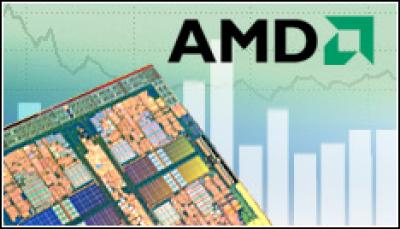Notebooks Boost AMD Revenues

AMD revenue grew 40 percent over last year, thanks to strong growth in the mobile PC chip business, and in graphics
Advanced Micro Devices followed rival Intel’s announcement of record second-quarter financial numbers with strong results of its own, though its high revenues were tempered by a net loss of $43 million.
AMD officials announced second-quarter revenues of $1.65 billion, up 40 percent from the same period in 2009, driven in large part by strong sales of mobile products.
Good graphics growth
 The chip maker also is seeing increasing gains through its ATI graphics business, which saw revenues jump 87 percent over the same three months last year.
The chip maker also is seeing increasing gains through its ATI graphics business, which saw revenues jump 87 percent over the same three months last year.
In a conference call with analysts and journalists July 15, CEO Dirk Meyer touted the results from AMD’s ATI business, saying the only drawback was that AMD had trouble keeping up with demand, a situation he said would be corrected over the next few quarters.
Despite the solid revenue numbers, AMD took a $120 million charge related to Globalfoundries, the company it helped create by spinning off its manufacturing business last year in a joint venture with Advanced Technology Investment Company, of Abu Dhabi. Excluding that charge, AMD showed a net income of $83 million, according to officials.
Meyer said the mobile PC products were a key driver for AMD’s Computing Solutions business in the quarter. Sony was the latest OEM to adopt AMD processors for their PCs, joining the likes of Hewlett-Packard, Acer, Dell, Toshiba and Lenovo.
During the call, Meyer said the company thought the PC business would see unit growth of 10 to 15 percent. Instead, the growth hit 15 to 20 percent, and the company continued to grow its share of the mobile PC chip market.
However, AMD officials were disappointed in the server business, noting that OEM adoption of its Opteron 6000 series “Magny-Cours” chips, which AMD introduced in March, was slow.
That was in contrast to Intel’s report from July 13. Intel officials said server chip sales continue to climb, aided by the anticipated return of corporate IT spending.
“Intel … knocked the ball out of the park,” Meyer said.
Despite the frustrating server numbers, he and other AMD officials said they expect improvements in the third quarter, as OEMs not only increase their adoption of the eight- to 12-core Opteron 6000 chips, but also the Opteron 4000 series, which was introduced in June.
The 4000 series, codenamed “Lisbon,” is aimed at the burgeoning scale-out and cloud computing environments.
During the conference call, Meyer also said that AMD is changing its plans for releasing the first of its “Fusion” APUs (accelerated processing units), which offer graphics and CPUs on the same chip.
Initial plans called for AMD releasing its 32-nanometer “Llano” APU, aimed at mainstream desktops and notebooks, by the end of 2010, with “Ontario,” for low-cost, low-power systems and embedded solutions in 2011.
However, now AMD will release the 40-nm Ontario—which Meyer called “a game-changer”—in the fourth quarter, with systems powered by the APU to come out in early 2011. Llano will come out in 2011.